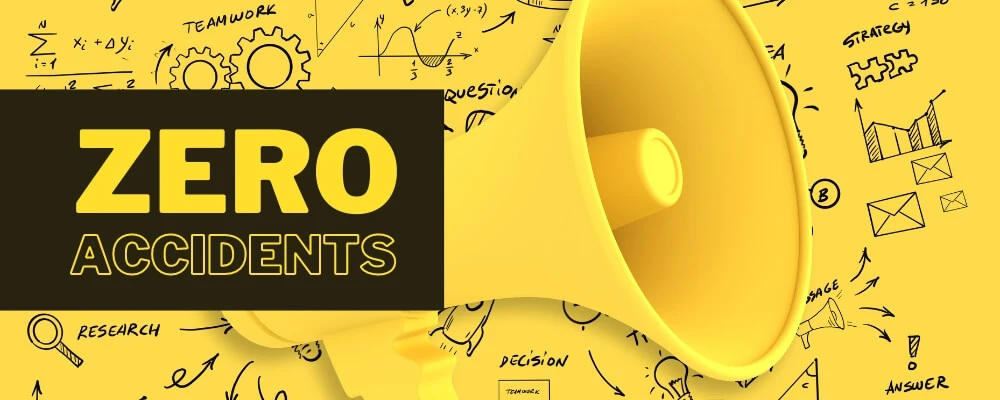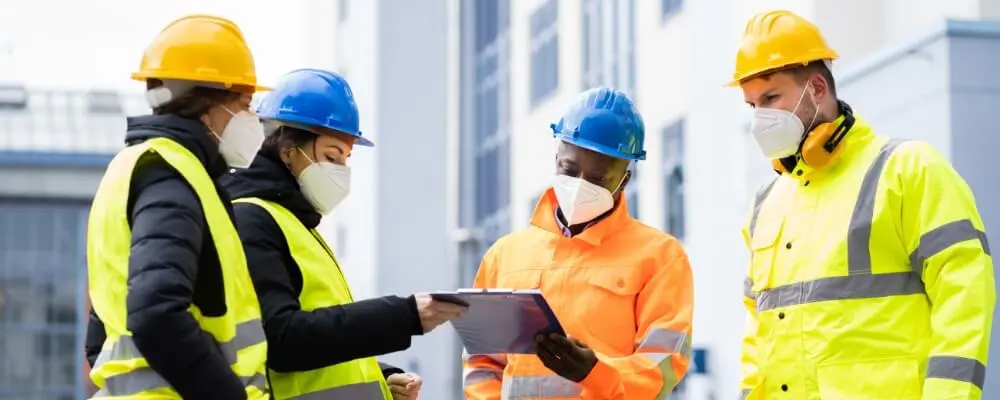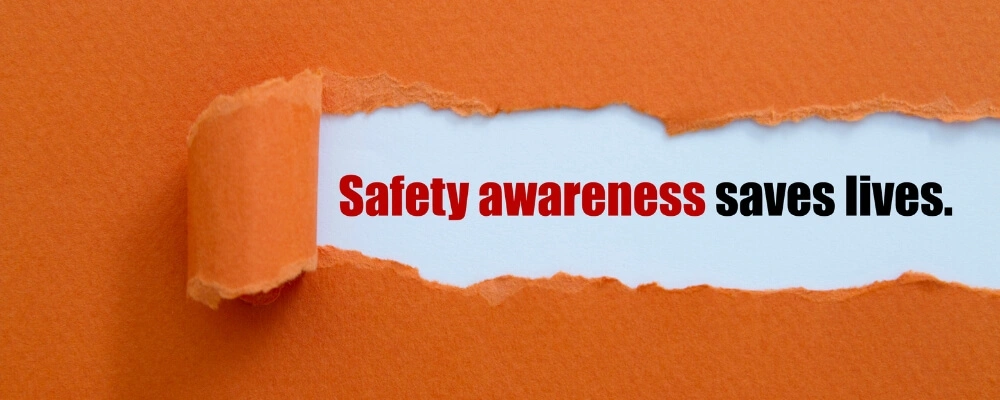In our rapidly evolving world, where risk factors can change with new technologies and societal trends, ensuring safety has never been more crucial. Safety campaigns are pivotal in this endeavor, serving as targeted efforts to educate, inform, and inspire actionable change. These campaigns touch upon various facets of our daily lives, from the roads, we drive on to the digital realm we navigate. But what makes a safety campaign successful? And why are they so crucial?
In this blog, we will delve into the essence of safety campaigns, explore their numerous benefits, share key tips for effective campaign strategies, and inspire you with innovative ideas. Whether you’re a safety professional, part of an organization aiming to foster a culture of safety or a curious individual, this comprehensive guide offers valuable insights into the world of safety campaigns.
What are Safety Campaigns?
Safety campaigns are organized efforts to promote and enhance safety within a specific context or setting. Their primary goal is raising awareness, educating, and changing behaviors that may lead to accidents, injuries, or other adverse outcomes. Government agencies, non-profit organizations, private companies, or community groups can initiate these campaigns. They often employ various communication tools such as advertisements, posters, brochures, seminars, training programs, and social media campaigns to disseminate their message.
Safety campaigns can cover a wide range of topics, including but not limited to:
- Road Safety: Campaigns promoting seat belt use, discouraging drunk or distracted driving, or teaching children about safe road-crossing practices.
- Workplace Safety: Initiatives that focus on safe work practices, proper use of personal protective equipment, or prevention of specific workplace hazards.
- Public Health: Campaigns that focus on preventing the spread of diseases, promoting hand hygiene, safe food handling, or vaccination.
- Home Safety: Efforts that prevent home accidents like falls, fires, or poisonings.
- Environmental Safety: Campaigns promoting safe practices to protect the environment, such as properly disposing of hazardous materials or conservation efforts.
- Digital Safety: Initiatives to raise awareness about cyber threats, online bullying, or safe internet practices.
The success of a safety campaign typically relies on clear messaging, understanding the target audience, effective use of media channels, and sometimes an element of behavioral psychology to encourage changes in attitudes and actions.

Benefits Of Safety Campaigns
Safety campaigns offer numerous benefits to individuals, organizations, and society. These benefits can be seen in immediate outcomes, longer-term behavior, and cultural norms shifts. Here are some of the benefits of safety campaigns:
- Raise Awareness: Safety campaigns inform the public about hazards or risks they might not know. By highlighting these risks, the campaigns provide valuable knowledge to the audience.
- Change Behaviors: Well-executed campaigns can motivate people to change potentially harmful behaviors, reducing the risk of accidents or injuries.
- Save Lives: Many safety campaigns, especially those related to road safety, workplace hazards, and public health, have the primary goal of preventing fatalities.
- Reduce Injuries: Aside from saving lives, these campaigns can significantly reduce the number of injuries or illnesses related to the addressed risk.
- Economic Benefits: By reducing accidents, injuries, and illnesses, safety campaigns can lead to lower healthcare costs, reduced absenteeism, and increased productivity. For businesses, this can mean fewer compensation claims and lower insurance premiums.
- Promote a Safety Culture: Regular safety campaigns can help instill a safety culture within organizations or communities, making safety a core value rather than just a requirement.
- Support Regulatory Compliance: Campaigns can help organizations and individuals understand and comply with safety regulations, reducing legal risks.
- Enhance Public Relations: For businesses and organizations, being associated with safety campaigns can improve their public image and demonstrate their commitment to the well-being of their employees, customers, and the general public.
- Empower Individuals: Safety campaigns provide people with the knowledge and tools they need to control their safety and those around them.
- Community Cohesion: Community-based campaigns can foster a sense of unity and shared responsibility among members, leading to a more connected and caring community.
- Innovation and Research: Addressing safety concerns can drive technological, process, or system innovation. For example, a campaign about reducing car accidents might lead to developing safer car designs or innovative traffic management systems.
- Educational Value: Many safety campaigns have an inherent educational component, leading to a better-informed public on various topics, not just safety-related ones.
- Feedback Mechanism: Safety campaigns can also act as a two-way communication channel. While the campaign delivers a message to the public, feedback from the audience can provide valuable insights for future safety initiatives or highlight areas of concern.
In conclusion, while safety campaigns aim to prevent harm, their benefits extend far beyond that, making them an essential tool in public health and safety strategies.

Effective Tips For Successful Safety Campaigns
For a safety campaign to be effective, it must resonate with its audience, inspire action, and be memorable. Here are some tips to ensure a successful safety campaign:
- Research and Understand Your Audience: Know who you are targeting. Understanding their demographics, interests, and behaviors can help tailor the campaign’s message and medium.
- Set Clear Objectives: Know what you want to achieve with the campaign. Is it to raise awareness, change behavior, or introduce new safety standards?
- Develop a Strong Message: The message should be clear, concise, and directly related to the objectives. It should evoke emotions, making it more likely to be remembered.
- Use Relevant and Relatable Stories: Real-life testimonials, stories, or case studies can make the message more relatable and impactful.
- Visual Appeal: Effective use of visuals, like posters, videos, or infographics, can make the message more engaging and easier to understand.
- Engage on Multiple Channels: Utilize a mix of traditional and digital media channels to reach a wider audience. This includes newspapers, television, radio, social media, and community outreach programs.
- Provide Practical Tips and Solutions: Instead of just highlighting the risks or dangers, offer practical tips and actionable solutions for the audience.
- Interactive Elements: Engage the audience with interactive elements like quizzes, workshops, or games, making the campaign more engaging and memorable.
- Monitor and Evaluate: Continuously monitor the campaign’s progress. Gather feedback, measure results, and adjust your approach if needed.
- Consistency is Key: Ensure the messaging is consistent across all communication channels. Repetition can help reinforce the message.
- Collaborate with Influencers and Stakeholders: Partnering with trusted figures or organizations in the community can lend credibility to your campaign and increase its reach.
- Celebrate Successes: Recognizing and celebrating small wins can motivate continued positive behavior. It can also create positive associations with the campaign.
- Stay Updated: Safety standards and best practices can evolve over time. Ensure that your campaign reflects the latest and most accurate information.
- Feedback Loop: Encourage feedback from the audience. This can provide insights into how the campaign is being received and where improvements can be made.
- Sustainability: A one-time campaign might raise awareness, but maintaining safety often requires ongoing efforts. Consider sustaining the campaign over time or integrating its lessons into regular practices.
By integrating these tips, safety campaigns can more effectively communicate their intended message, foster a safety culture, and reduce risks and prevent accidents or adverse events.

Different Safety Campaigns Ideas
You must tailor each initiative to your target audience and context when designing safety campaigns. Here are various safety campaign ideas across different domains:
Road Safety:
- “Eyes on the Road” – A campaign focusing on the dangers of texting while driving.
- Buckle Up Every Time” – Encouraging the use of seat belts for every trip.
- “Drive Sober or Get Pulled Over” – Highlights the risks of driving under the influence.
Workplace Safety:
- “Zero Harm Days” – Encourage reporting and prevention of workplace incidents.
- “Protect Your Hands” – A campaign centered on proper glove usage and hand safety.
- Lift Right, Every Time” – Safe lifting techniques to prevent back injuries.
Public Health:
- “Get the Shot, Not the Flu” – Promoting annual flu vaccinations.
- “Clean Hands, Clear Conscience” – Campaign for regular handwashing or sanitization.
- “Cover, Cough, Care” – Educating on how to cough or sneeze into a tissue or elbow to prevent the spread of germs.
Home Safety:
- “Check Your Detector” – Reminding homeowners to check their smoke and carbon monoxide detectors.
- “Secure Your Space” – Campaign against home hazards that can cause falls, especially targeting seniors.
- “Keep Kids Safe” – Educating about childproofing homes to avoid accidents.
Environmental Safety:
- “Leave No Trace” – Encouraging outdoor enthusiasts to minimize their environmental impact.
- “Reduce, Reuse, Recycle” – Promoting sustainable habits for waste management.
- “Switch Off and Save” – Campaign to reduce energy consumption by switching off unused electronics.
Digital Safety:
- “Think Before You Click” – Highlighting the risks of phishing emails and suspicious links.
- “Guard Your Digital Self” – Tips for creating strong, secure passwords and using two-factor authentication.
- “Respect Online” – Campaign against cyberbullying and promoting positive online interactions.
School Safety:
- “Safe Routes” – Encouraging kids to use safe routes while walking or biking to school.
- “Buddy System” – Promoting using the buddy system during school outings.
- “Report, Don’t Ignore” – Encouraging students to report suspicious activities or bullying.
Recreational Safety:
- “Swim with a Buddy” – Promoting the buddy system for water activities.
- “Gear Up Right” – Highlighting the importance of using the right gear for sports or recreational activities.
- “Know Your Limits” – Encouraging responsible behavior during outdoor activities like hiking or skiing.
Fire Safety:
- Plan Your Escape” – Encouraging families and organizations to have a fire evacuation plan.
- “Stop, Drop, and Roll” – Educating kids and adults on what to do if their clothes catch fire.
- “Every Second Counts” – Raising awareness about how quickly fires can spread.
The success of any safety campaign largely depends on its relevance to the target audience, the clarity of its message, and its ability to inspire behavioral change.

Different Types of Safety Campaigns
Safety campaigns are designed to raise awareness, provide education, and promote behavior change in relation to various safety concerns. These campaigns can be tailored to different audiences, from children to industry professionals. Here’s a list of different types of safety campaigns:
1. Time-Based Safety Campaigns:
Time-based safety campaigns are driven by a clear timeframe, often set to achieve specific safety objectives by a deadline. The presence of a fixed end date can galvanize action and ensure sustained attention.
Whether a week-long push for fire safety awareness or a month-long drive to reduce workplace accidents, the time constraint helps generate urgency and mobilize resources effectively. The temporal nature of these campaigns can also coincide with relevant events or seasons, such as promoting road safety during holiday travel peaks or emphasizing sunscreen usage during summer months.
2. Hazard-Based Safety Campaigns:
Hazard-based safety campaigns aim to identify, address, and mitigate a specific risk or danger. The primary objective of these campaigns is to educate the target audience about a particular hazard and offer solutions or preventive measures to combat it. For example, a campaign might focus on the dangers of working with a specific type of machinery in a factory and offer training sessions, guidelines, and safety gear to mitigate those risks.
By narrowing down on a specific hazard, these campaigns can offer in-depth knowledge and specialized solutions to effectively reduce potential harm.
3. Performance-Based Safety Campaigns:
Performance-based safety campaigns prioritize clear, measurable outcomes. They are designed with the idea that everyone involved should quickly grasp the campaign’s goals and the metrics by which success will be measured. For instance, a campaign might aim to reduce workplace injuries by 20% over a year.
These campaigns usually involve consistent monitoring, regular feedback, and setting milestones to track progress. The clarity of the objective ensures that all participants remain aligned, allowing organizations or communities to measure and celebrate their successes, fostering motivation and adherence to safety protocols.

Reasons Behind Safety Campaigns Failures
Safety campaigns can sometimes fail to achieve their intended outcomes for various reasons. Understanding these reasons can help organizations design more effective campaigns in the future. Here are some common reasons behind safety campaign failures:
- Lack of Clarity: If the campaign’s message is ambiguous or not easily understood, the audience might miss the point or become confused about the desired actions.
- Poor Research: A campaign that doesn’t accurately address the root causes of a safety issue, or is based on outdated or incorrect data, is likely to miss the mark.
- Insufficient Engagement: If the target audience doesn’t feel involved or invested in the campaign, they may not take the desired actions.
- Cultural Insensitivity: Campaigns that fail to consider cultural, regional, or societal norms and values might face backlash or non-compliance.
- Low Visibility: Even a well-designed campaign can fail if it doesn’t reach its intended audience due to inadequate promotion or media coverage.
- Lack of Resources: Insufficient budget, manpower, or tools can hamper the implementation and reach of a safety campaign.
- Failure to Adapt: Not adjusting the campaign based on feedback or changing circumstances can decrease its effectiveness.
- Overly Complex Solutions: If the solutions or actions recommended by the campaign are too complex or cumbersome, the audience might resist adopting them.
- Lack of Credibility: Campaigns spearheaded by entities that lack trustworthiness or credibility in the eyes of the audience can face skepticism.
- Neglecting Emotional Appeal: Only focusing on logic and facts, without considering the emotional factors that drive human behaviour, can reduce the impact of a campaign.
- Inadequate Incentives: Compliance might be limited if there are no positive reinforcements or incentives for adhering to the safety guidelines.
- Short-term Focus: Campaigns that only focus on immediate changes without considering long-term sustainability can lose momentum once the campaign ends.
- Ignoring Stakeholders: Not involving or consulting key stakeholders during the campaign planning can lead to oversights or resistance.
- Poor Timing: Launching a campaign during inappropriate times, like major unrelated events or crises, can overshadow its message.
Recognizing and addressing these pitfalls early on can greatly enhance the efficacy and reach of safety campaigns, ensuring that they bring about the desired behavioural changes and safety outcomes.
Conclusion
Safety campaigns are more than just messages or strategies; they represent a commitment to the well-being of individuals and communities. Through focused efforts, they address specific risks, foster awareness, and promote actionable steps to ensure a safer environment for everyone. The success of these campaigns relies on clear objectives, engaging content, and a deep understanding of the target audience. The benefits, from saving lives to creating cohesive communities, are invaluable.
As we’ve explored the various facets of safety campaigns, from their core principles to their implementation, it becomes evident that they are an essential tool in our collective quest for a safer world. By harnessing the right tips, understanding the underlying benefits, and continually innovating with fresh ideas, we can make the most of these campaigns, ensuring that safety isn’t just a priority but a shared value.

